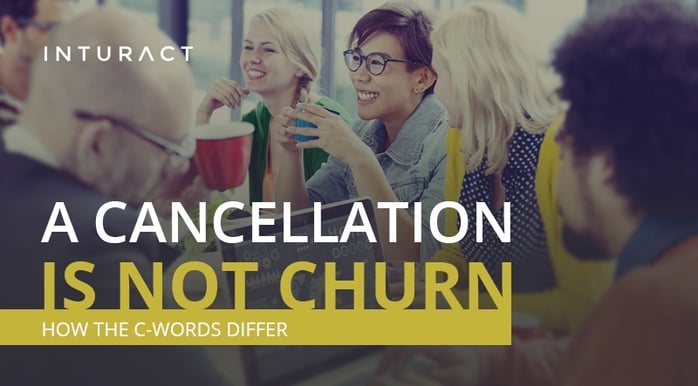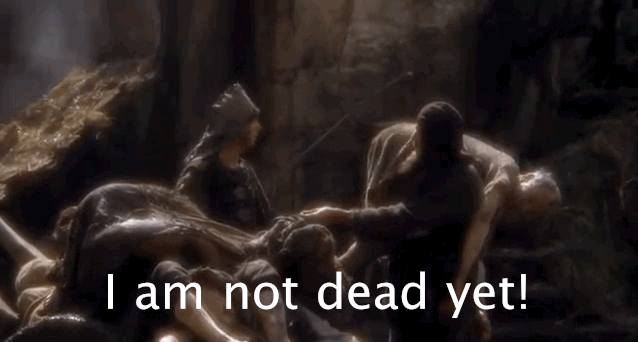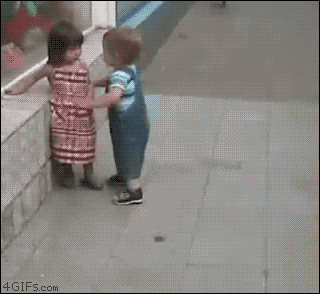
This is an updated version of the original post that was published November 2015.
Churn is what you don’t want. It’s customers leaving you. Saying yes, then saying “Ah, changed my mind.” It’s the breakup we don’t see coming (if only we’d seen the signs sooner!), and it not only hurts our egos, it hurts our businesses.
But simply saying “churn is when customers leave” oversimplifies the situation. If we examine the timing and causes of churn, we can come up with solutions that can stop churn in its tracks (and even reverse it).
The 4 Flavors of Churn
Two men have given a lot of thought to how and why churn happens, and have each come to the same conclusion: There are 4 main reasons people fail to renew, and none of them have anything to do with your company, product or service.
Tom Tunguz dissects them this way in Why Everything I Thought I Knew About Churn is Wrong:
I’ve modeled four different types of customer retention curves below, each with the same 3.5% average monthly churn, but with wildly different customer behaviors…
- Annual Renewals: 1.5% of these customers churn each month and at each 12 month period, when it’s time to renew a big contract, another 25% churn.
- Cliff: in the first month, 70% of customers churn. In the second month, 22% of customers churn. Then only 1% of customers churn each month.
- Constant: a steady 3.5% monthly churn per month.
- Declining: churn starts at zero and increases 0.25% each month.
Aaron Ross adds his churn theories to these basic four, and adds another potential reason for churn. He lists his four types of churn as:
- Onboarding – Which explains the “Cliff” jumpers; the 70% who churn in the first month because they aren’t realizing enough value to maintain interest.
- Product – Also contributes to the 30-60-day “Cliff” jumpers, but this is when they realize that your product doesn’t solve their problems like they thought it would.
- Credit card – That “Constant” churn Tunguz lists might well be due to the average 3% of credit cards that expire every month.
- Champion – This is when the person championing your product at their company leaves, and is replaced by someone who wants to use a different product. This one doesn’t directly correlate with Tunguz’s statistics since it can happen at any time.
Some people simplify all of this into just two types of churn: Involuntary (circumstances entirely outside of their control lead to churn), and voluntary churn (when they actively decide to leave).
Note that not one of these reasons involves not building a certain feature. Most of churn is really due to messaging (are you delivering on what you promised?), customer service (when they reach out, is it a positive experience?), and most importantly, customer success.
Churn and Customer Success
Customer success is where you can do some serious damage to those churn rates (in a good way).
Here’s the magic of customer success:
It’s a proactive approach to churn that has designated customer success agents reach out to customers who are in the onboarding stage (ie. a high-risk time) and:
- Ask them what they hope your product will do for them,
- Break down that goal into measurable steps,
- Show them how to achieve it,
- Track their progress,
- Celebrate with them when they succeed at each step, and
- All the while, remind the customer that they are, in fact, realizing value.
If a customer is successfully achieving their own goals, they are unlikely to churn. Most companies, however, fail to give their customers the kind of support they need, allowing them to drop off the 60-90-day “cliff.”
Of course, customer success doesn’t stop after 90-days. Customer success departments can also be responsible for tracking user behaviors that predict churn (such as not logging in as often), and – once again – proactively chirp in and see what the user needs.
The credit card churn issue is easily reduced, if not remedied, by automating emails to remind people when their credit cards are about to expire, or using a credit card updater service.
Which leaves the B2B “Champion” type of churn. Once again, this is a job for the customer success team, because ensuring you have more than one “champion” at any given client company is a matter of effective outreach. Very often, you’ll have a single contact person, but that’s not the only person using your product or service. Aaron Ross suggests sending tokens of appreciation to people other than your contact, to ensure that, if the contact leaves, your swag pens (and the warm feelings that come with them) remain.
But what do you do when someone deliberately cancels? Isn’t that churn too?
Cancellation Isn’t Churn Because …
At first glance, “cancellation” and “churn” might seem like essentially the same thing – they’re both about customers leaving, right? Yes. But, while Churn is when customers leave you FOREVER, cancellation can be, well, canceled. Andrew Tate nailed the last-minute cancellation-save strategy in "Why a SaaS customer hasn’t churned when they cancel."
When a customer cancels their account, it doesn’t mean they’re lost and gone forever. Most can be won back. After all, they came to your service because they believed you could do something for them in a way no other company could. They believed they would find success with you. They wanted to love you.
Somehow, you let them down.
But unless you really toasted marshmallows over that burnt bridge, they still want to love you. Which means, if you play your cards right, they’ll be willing to come back.

The special case of cancellations with time left in their subscriptions
Before we get into tracking, tackling and hog-tying a customer who has fled to the next town (I’m just kidding…sort of…), let’s talk about the easiest customers to win back – the ones who haven’t quite left yet. They’ve hit the cancel button, but they still have time left in their subscriptions (45.5% of all churned customers cancel 3 weeks before their subscriptions end), which means they still have access to your service.
With the right inbound marketing approach, you can win them over.
First, flag cancellations separately from churn. You want to know when a customer has one foot out of the door – and when both feet are walking away. It’s not a bad idea to only count cancellations as actual churn once the subscription period has officially ended.
Then, you need to find out whether your cancelled customers are gone-gone, or were frustrated by something fixable. But be careful with your outreach. You don’t want to chase after a customer with a hard-sell after they’ve already rejected you (this happened to me at a Christmas tree lot once, it was very creepy).
Your cancellation message
When you reach out to your customer, you want to do so with concern.
“Hi [insert name],
We’re so sorry to see you go, and we were hoping before you leave that you’d be willing to tell us how we can improve. Would you mind taking this survey? We’d really appreciate your feedback.
[insert exit survey]”
You’re not trying to lure them back, you’re trying to improve your company – that’s the line you need to take. Then, when they answer your survey, you have options.
Fixable, not fixable, don’t wanna fix
- If their reasons for leaving are fixable, fix them! And tell them you’re fixing them. And tell them you’re fixing them in a human-to-human way, not with an automated message, which sends the signal that you value them as customers and as fellow human beings.
- If their reasons aren’t immediately fixable, you’ve gained valuable feedback that can help direct future plans for growth, or help you further refine your buyer persona to attract people who love what you do, instead of wishing you did something else.
- If you don’t plan to fix their problem, but have a really good reason for it, here’s an idea: Explain why you’ve made the choices you’ve made, and how those choices end up benefitting the user.
Whatever you do, don’t send a message that sounds like a robot wrote it. Automated is good – it’s all part of a growing business and it’s a vital tool when time is of the essence, but always have that personal touch.
Time it right
Your cancellation intervention has to be timed very carefully. You only have a short window, but if you begin your campaign to win them back too soon, you won’t succeed either.
When your customer cancels, give them a day or two to cool off. Then contact them with a personal-sounding message and ask why they left (with a brief exit survey that leaves room for an open-ended response).
Use customer feedback wisely
Customers usually leave for the same few reasons (start a list if you don’t believe me).
- Cheaper prices – Your prices might be fine, probably are, but you haven’t conveyed the value for dollar strongly enough.
- They don’t need your services anymore – Might be time for you to expand your offerings if this is a common problem.
- They’ve found another solution they like better – Find out why a competitor appealed to them. What do they have that you don’t? Then, decide if you want to go there. You may not.
- You ticked them off, neglected them, OR, someone in their company is pushing for a competitor – You need to up your game with customer success. Successful customers don’t leave, and they feel like you’re invested in their success.
Don’t be pushy
 If someone is set on leaving, by all means, let the churners churn away. It’ll be better for your company in the long run to do away with sketchy customers so you can focus on keeping your loyal customers blissfully happy (and very successful).
If someone is set on leaving, by all means, let the churners churn away. It’ll be better for your company in the long run to do away with sketchy customers so you can focus on keeping your loyal customers blissfully happy (and very successful).
Besides, if you try too hard much to convince cancellations to stay, or prolong the cancellation process, you’ll irritate your departing customers who will then turn to social media to complain about it!
If you would like more information on cancelations and churns and how the terms differ, consider meeting with our team of SaaS experts during a free SaaS business assessment.
FAQ's
1. What are the types of churn?
There are four types of churn:
- Onboarding churn
- Cliff churn
- Credit card churn
- Champion churn.
2. What is Cliff churn?
Here’s how we explain Cliff churn. Suppose in the first month, 70% of customers churn. In the second month, 22% of customers churn. Then only 1% of customers churn each month.
3. Why isn’t Cancellation the same as Churn?
Churn is when customers leave you forever, but Cancellation can be reversed. In the case of Cancellations, they had come to your service because they believed they would find success with you. Somehow, they felt let down. If you handle it right, most cancellations can be won back.



